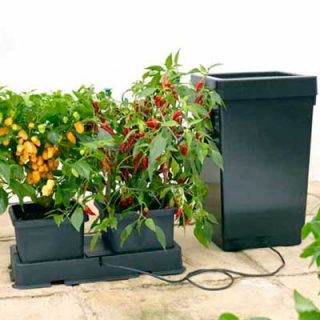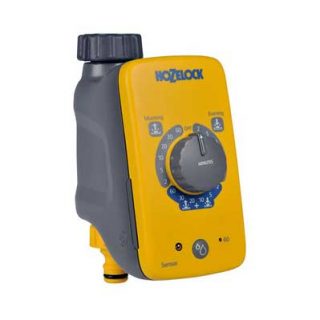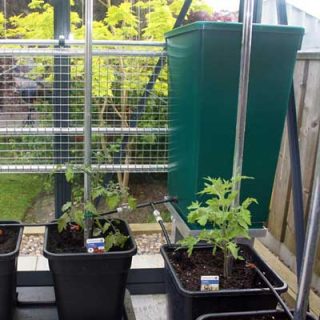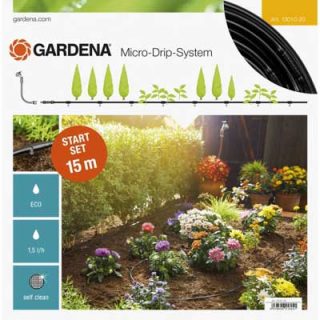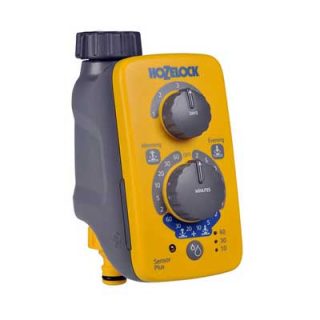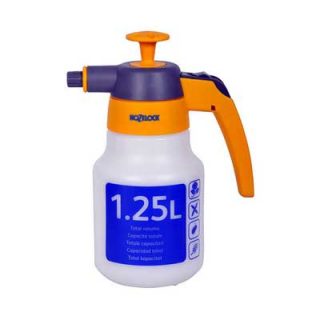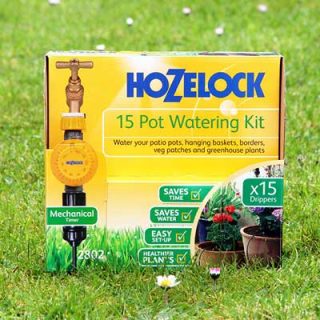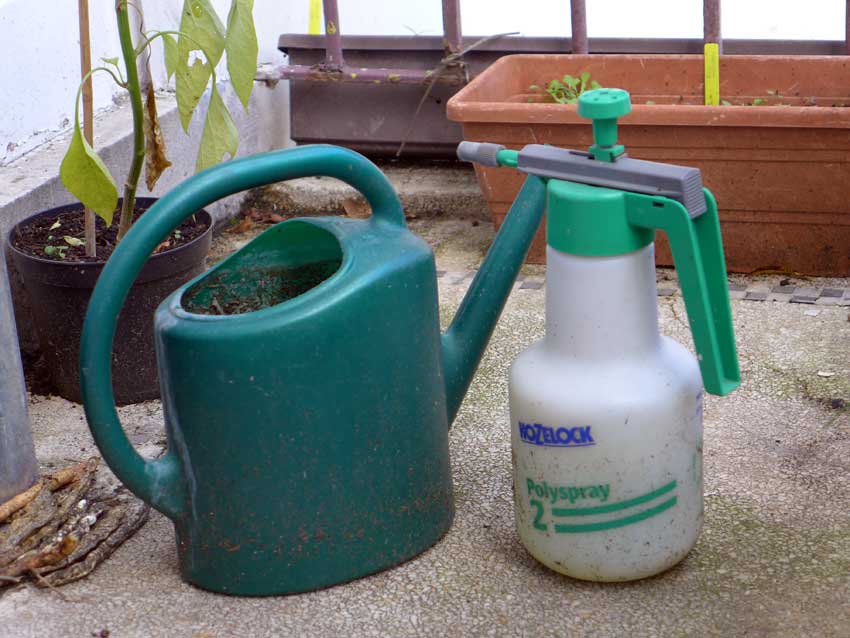
Watering in the garden
Watering a vegetable garden is a chore. However, many gardeners continue to hand water with an old fashioned watering can (myself included) as this allows time in the garden to observe the plants and check on their overall health. Watering can be a relaxing half hour spent in the garden every day.
For people with busy working lives watering can be an extra chore in a busy day and the reason not to get involved with growing vegetables. This need no longer be the case. There are now a range of new technology systems that are inexpensive and easy to install that take over the chore and automate watering. These systems are far more efficient than hand watering, give the plants exactly what they need and cover for holidays and busy days.
However, whether watering automatically or by hand it is important to understand the basics of how water works in the garden. This article is about watering vegetables in a garden using an old fashioned green plastic watering can. It is about the way plants use water, how soil holds water, how climate affects water and how we as gardeners use far too much of the stuff on our gardens.
Water constitutes 95% of a plant. Transpiration (like perspiration) is the evaporation of liquid water contained in the plant tissues into the atmosphere. Almost all the water absorbed by a plant is lost by transpiration so only a small fraction remains within the plant. Transpiration from the leaves of a plant exerts a pulling force on water from the plants roots in the soil. Most of a plant’s water needs are supplied from the suction caused by transpiration.
Water is essential to plants for four reasons: First, as stated, it constitutes up to 95% of the plant’s protoplasm (mass). Second, it is essential for the process of photosynthesis. Third, it is the medium in which nutrients are carried to, into and throughout the plant. Finally, water provides the turgidity by which the plant keeps itself in position (i.e. standing erect).
Moisture travels from the root zone up the main stem of the plant and into the smaller stems in a process known as mass flow. The plant’s cell structure absorbs the nutrients from the water before it then transpires through the stomata; the minuscule holes in the leaves. Plants must receive just the right amount of moisture to thrive; too much water and the plant cells stop absorbing nutrients, while too little water causes the stomata on the leaves to dry out and close.
How different soils hold moisture is central to the plant’s transpiration suction process. This process can be affected if the soil drains too quickly and dries out (ie sandy soil) or if the soil is heavy or gets water logged easily. Vegetable plants require a steady presence of moisture movement in soil (not stationary) to achieve ideal transpiration and growth. Fortunately the moisture content of soil can be adjusted quite easily to balance this process.
Understanding the soil medium is about soil texture, structure, organic content, depth, pre-existing soil moisture and soil temperature. A fine-textured soil with a good granular structure is the best suited to the infiltration of water. Heavy clods of soil are not. Soil structure is the arrangement of the solid parts of the soil and the pore space between them. This spacing determines water and air movement in the soil, possible biological activity, the ease of root growth and the emergence of new seedlings.
The organic content of soil, in a state of constant biological breakdown, plays an important role in preserving soil texture and structure by preventing soil crusting. It further holds moisture, used in the organic breakdown process and generally raises the overall moisture holding capacity of the soil. The regular addition of organic compost to soil is the easiest way to improve soil moisture content.
Soil depth is about the depth of soil before hardpan or rocky substrate is found. This can be improved by breaking up an underlying hardpan but often it is easier to build a raised bed to create additional soil depth as even a broken up hardpan will eventually reform. In general terms, plants require a minimum of 50cm of good textured and structured soil.
All soils have a pre-existing moisture content (particularly in Belgium). In cooler wetter climates the soil holds water throughout the year. Even during summer heat most soils will hold moisture at depth. In desert climates this is not so with hardpan forming underneath leaving dried out soil above to be blown about.
In a similar vein, soil temperature plays a big part in the moisture content of soil. As soil temperature along with atmospheric temperature are as important to plant growth as sunlight, a soil bed is an important regulator for not overheating plants during summer months. Bare exposed soil looses moisture through evaporation at an alarming rate, up to 70% on a hot day and causes the soil temperature to rise. Protecting the soil surface with mulching or shade cover ensures a stable soil temperature for best plant growth.
Having looked at plant mechanisms and soil structure, it is important to consider climate. This is more complicated. With climate change all the old rules for watering gardens become uncertain and even misleading. Weather patterns are no longer fixed and regular. Seasonal changes are no longer clear and straightforward. This means set rules for watering are redundant and observation becomes the key.
Extreme weather events, whether sudden chills, excessive heat or sudden downpours all affect the health of plants and their needs for consistent moisture. Even the nature of summer heat when extreme has a big effect on soil moisture content and the plants transpiration process. Managing this climate change in the garden is about not over-watering during heat waves and trying to provide the steady consistent situation plants prefer.
New technologies are available to help manage the vagaries of modern weather. Advanced soil moisture meters that regulate automated watering based upon soil moisture readings at depth are relatively inexpensive and easy to install. Solar controlled regulators monitor the ambient temperature around plants and apply water as required by the plant. In the confusing situation of trying to maintain a consistent water balance these new technologies remove much of the guess work and may in time replace the watering can with the Iphone.
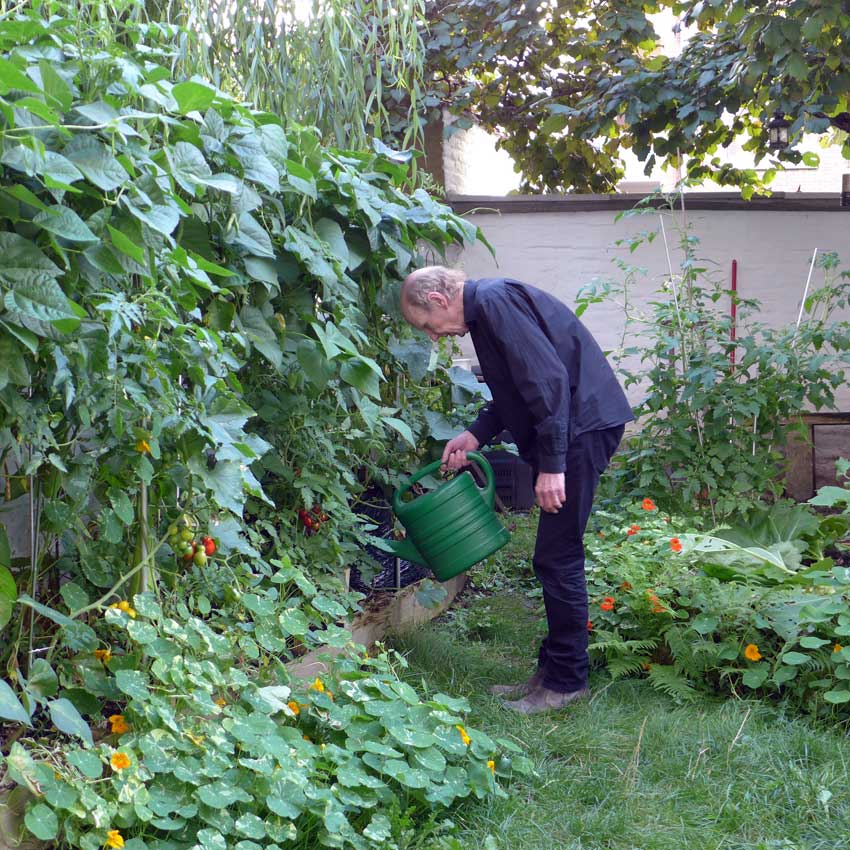
Watering and irrigation
Watering can be considered surface supplied (watering can) while irrigation can be considered both on-surface and sub-surface delivery. The main problem with surface delivery is over-watering which flushes nutrients deeper into the soil, beyond the plant roots, and the excessive loss to surface evaporation. This occurs during periods of heightened heat. Conversely, over-watering during cooler temperatures can cause excessive build up of surface moisture which attracts infection and disease to plants.
While surface drip irrigation to plants is an effective and water-efficient means of watering, the future is most probably with sub-surface delivery. Soaker hose is probably the most known of these systems where a porous rubber hose is buried beneath plants and leeches water to the root zone at a steady rate. This can be simply fitted to a water butt in a simple manual system or attached to a mains supply using a regulator.
Containers are a rule unto themselves and require careful observation and more attention with watering. Simple drip irrigation kits are available for containers which can make all the difference in providing that essential consistency of soil moisture content for plants.
See article on Container Gardening
As for water sourcing, rain water harvesting or use of household grey water (ie non toilet water) are maybe not so necessary in wetter climates where such water can be better recycled within the house for toilet flushes etc. Particularly in the smaller garden where space is at a premium and water butts are large and hard to place, other means of managing water use appear more useful.
Shading is an often overlooked important factor in managing water consistency in the garden. Plants do not require endless direct sunlight and indeed suffer when over exposed. The proper use of shading whether from plants growing over other plants or by using walls or even shade cloth can substantially reduce water loss and provide plants with that all important consistency they desire.
While all the old rules of watering remain sensible; water in the morning or evening, water the soil and not the plant, the best future for watering in the garden may become sensor controlled and automated to ensure maximum plant health and best water efficiency. The watering can will always have its place in the garden but modern vegetable growers, especially busy ones, should consider the use of modern irrigation systems to remove some of the guess work required in the past.
